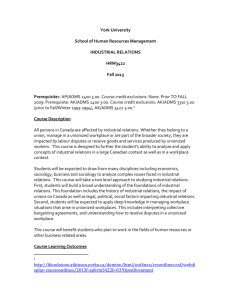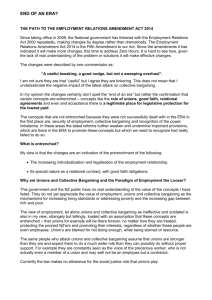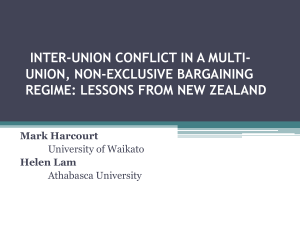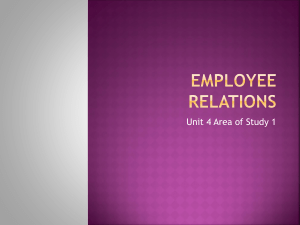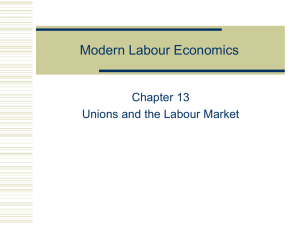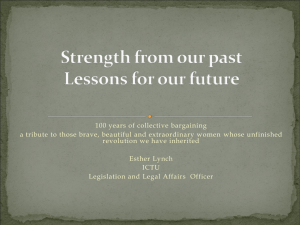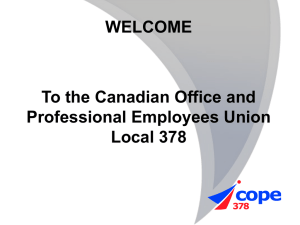MS Powerpoint File
advertisement
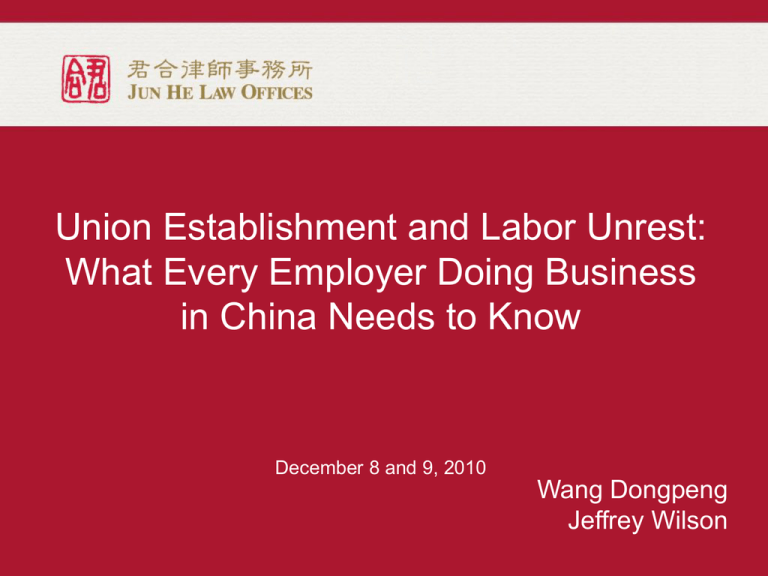
Union Establishment and Labor Unrest: What Every Employer Doing Business in China Needs to Know December 8 and 9, 2010 Wang Dongpeng Jeffrey Wilson Unions Unions—Key Concepts • All-China Federation of Trade Unions (ACFTU)—unitary structure • ACFTU independent, but must uphold the leadership of the CCP • “Enterprise unions” • Leadership from the “upper-level” union • Employers must pay 2% of total payroll to fund a union Roles of Unions • • • • Represent interests of employees Preserving harmony / social stability Mediating disputes Monitoring companies for employmentrelated compliance Powers of Unions • Right to notice before employee dismissal • Consultation rights – Company policies – “material employee-related matters” – restructuring or “important operational issues” • Demand collective bargaining Union Establishment • Unionization campaigns and targets • Must a company have or establish a union? • Establishment procedures Management Strategies • Unions Establishment – Ignoring – Circumvention – Compliance • Types of Unions – “Paper” Unions – “Social Welfare” Unions – “Integrated” Unions Other Employee Groups • Employee Representative Congress • Employee Assembly • Employee Welfare Clubs Strikes and Workplace Unrest Strikes and Workplace Unrest • Are strikes legal? • What are the employees demanding? – Basic rights – Interests Strikes and Workplace Unrest • What actions should be taken immediately? – Notify the authorities – Identify employee representatives – Reach temporary agreement to get facilities back on line Strikes and Workplace Unrest • Settling a strike – Involvement of the authorities • ACFTU • Labor Bureau – Negotiations with employee representatives – Company issues announcement or agreement is signed Strikes and Workplace Unrest • What actions can be taken by an employer? – Salary deductions – Termination of striking employees – Hiring of replacement workers – Lockouts Strikes and Workplace Unrest • Common Employer Mistakes – Not having ready crisis team, plan, and procedures – Lack of local government relationships – Underestimating ability of employees to independently organize and negotiate – Calling in outside security – Appearing too strong or too weak Steps to Avoid Unrest • • • • Compliance with labor standards Compliance with government policy Competitive compensation and benefits Responsive HR policies and grievance procedures • Communication channels with employees Steps to Avoid Unrest • Consider establishing employee representative congress • Consider establishing and encouraging “integrated” union • Consider entering into collective contract Collective Wage Bargaining Collective Wage Bargaining • Why the push? – Unbalanced income distribution – Economic crisis and inflation – Boost domestic demand – Changing structure of Chinese economy – Strikes and work slowdowns Collective Wage Bargaining • “Rainbow Plan” – Collective contract targets – Legislative proposals Collective Wage Bargaining • Does an employer have to: – negotiate? – enter into a collective contract? – raise salaries? Collective Wage Bargaining • Procedures – Either party may demand negotiations – Employee negotiators selected by union or employee assembly or employee representative congress – Negotiate in good faith – Draft contract submitted to employee assembly or ERC for approval – Sign collective contract – Submit contract to labor bureau for review Collective Wage Bargaining • References to determine salary increases – Salaries in different geographical areas – Salaries in the same industry – Company profits – Inflation indexes – Government salary increase guidelines Collective Wage Bargaining • Uncertainties – Government attitude – Stance of trade union – Lack of clear laws – Economic and social conditions Questions?


